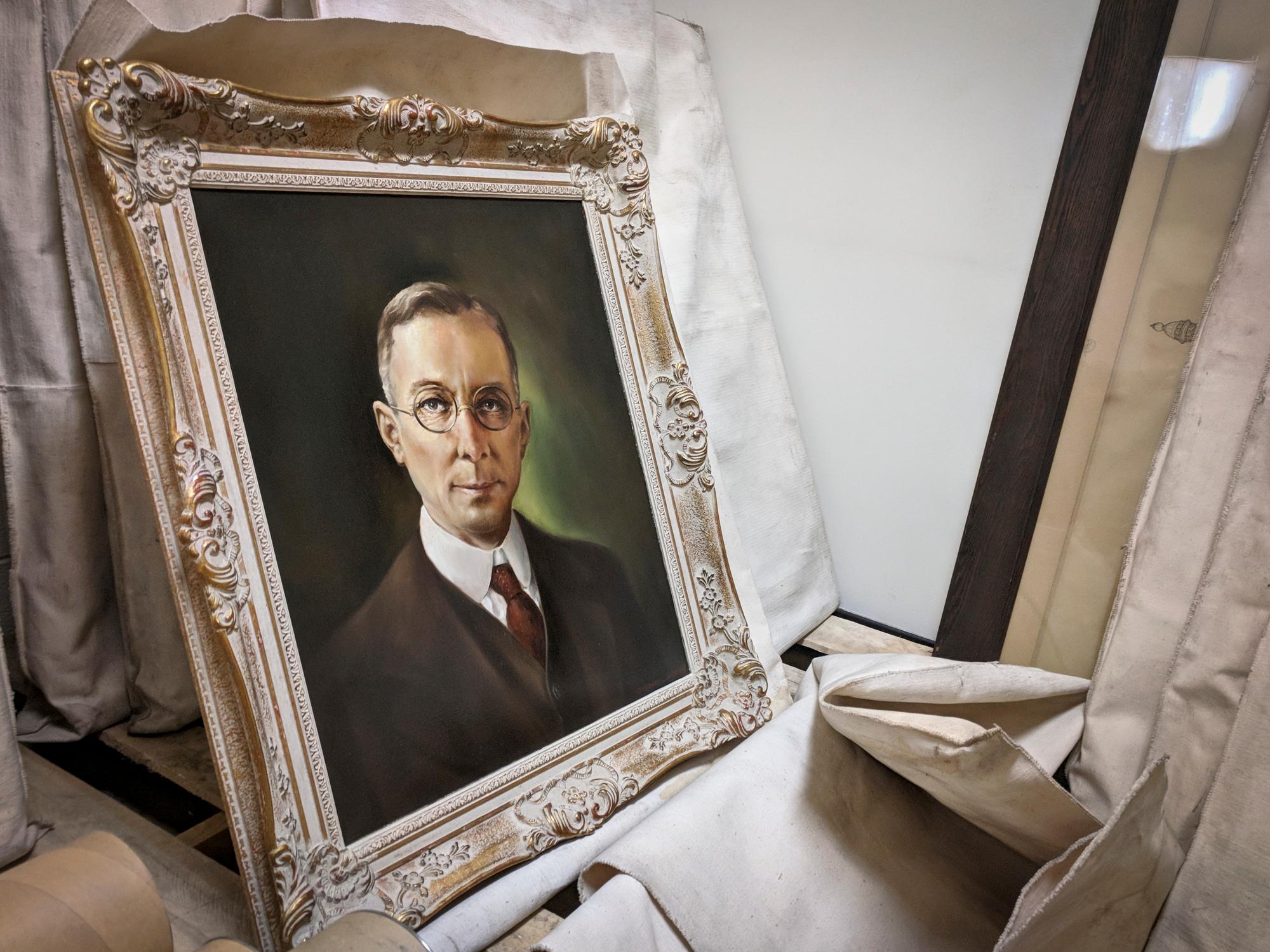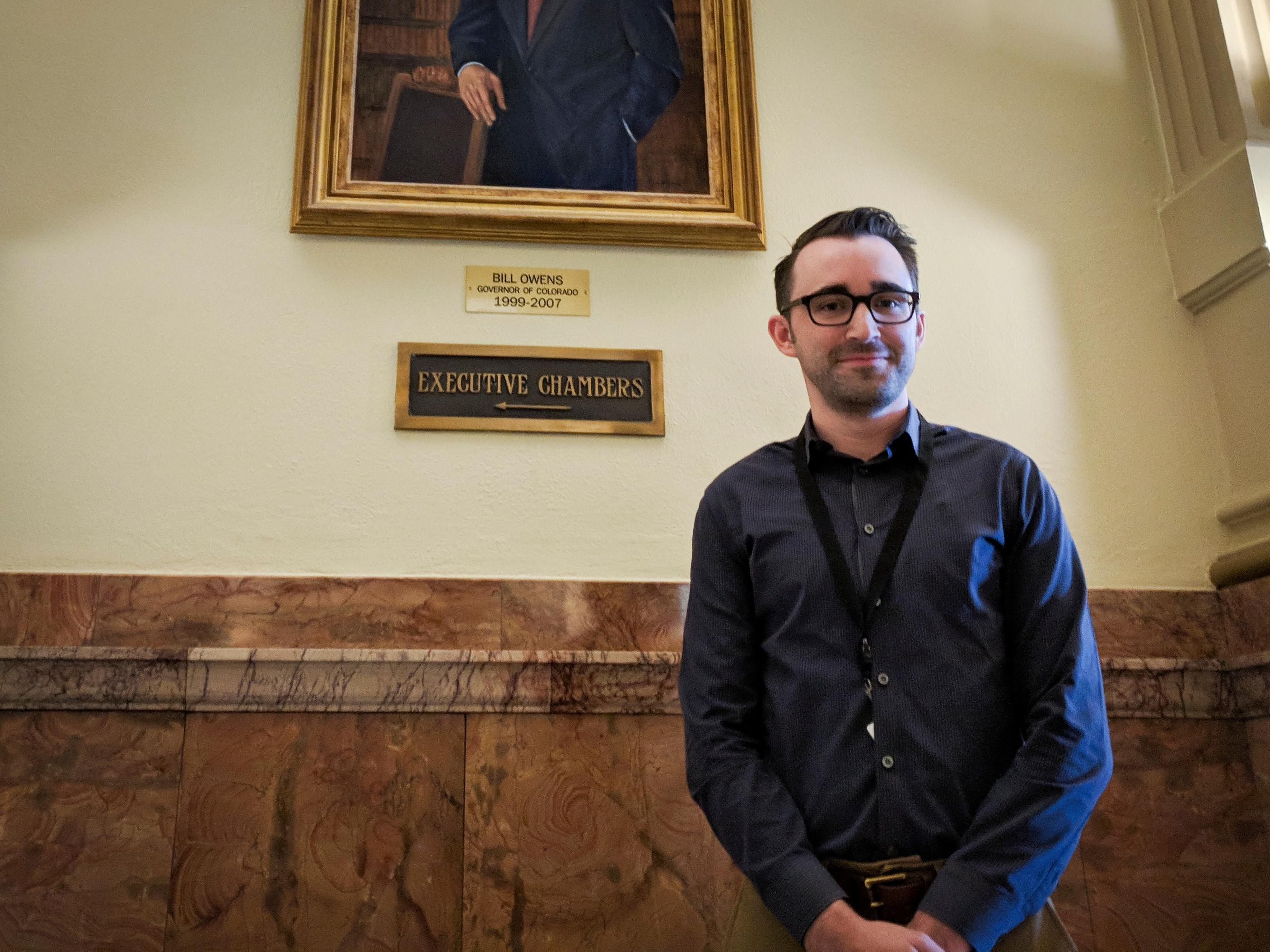

The Colorado State Archives in downtown Denver are a sleepy set of shelves crammed with historical documents and ornate ledger books. That changed when rainwater started seeping into the sub-basement in 2014.
As cleanup crews scrambled to save historic materials, they noticed a narrow opening between a bookshelf and a back wall. A panel of blue peg board blocked the opening. Behind it, they found a series on nondescript canvas-type bags.
Inside the bags were 20 portraits of past Colorado governors that had been missing for decades. Two other paintings depicted a state Supreme Court justice and a mysterious woman the archive has yet to identify. The discovery explained the lack of gubernatorial portraits at the state Capitol. While Colorado has had 49 governors dating back to its territorial days, portraits of just nine are on display.
The archives simply lost track of the portraits at some point in the last few decades, said Doug Platt, communications manager for the Colorado Office of Personnel and Administration.
“It’s not unlike someone’s basement in their home,” he said. “You have stuff in boxes and in bags that you haven’t looked at in a while and sometimes you forget what’s in there. And that’s essentially what happened.”

The oldest painting of the bunch is territorial Gov. Alexander Cummings, who served from 1865 to 1867. The gold-leaf frame around the painting is chipped and there’s an x-shaped punch through the canvas. Repairing the portrait for display will require an expensive and painstaking restoration work.
But the prospect of returning the portraits to the Capitol’s walls raises another question: How should the state remember men who presided over dark periods in the state’s history? Those include crackdowns on mining strikes, massacres of native Americans, and in the case of Clarence Morley, the rise of the Ku Klux Klan.
Morley served as Colorado’s 24th governor, from 1925 to 1927. He won in landslide after a campaign that vilified Jews and Catholics. As governor, he pushed the University of Colorado to fire its non-Protestant professors. He also nearly managed to ban the Catholic use of sacramental wine.
On the 50th anniversary of Martin Luther King, Jr.'s assassination, the memory of the KKK in America has become a pressing issue. Statues of confederate generals built during the Klan's resurgence in the early 1900s have come down across the country. Groups have demanded a new name for Denver's Stapleton neighborhood because it is named for Denver Mayor Benjamin J. Stapleton, who is also believed to have been a Klan member.
Such conflicts set the stage for what's likely to be a contentions debate over the portraits next year. When asked if governors like Morley deserve a place at the Capitol, Republican Senate President Kevin Grantham said he’s not worried about such questions at the moment. He sits on a committee that will decide whether the portraits will be hung.
“I'm worried about ‘how do we get these paintings fixed?’ “ Grantham said.
The next state budget sets aside $125,000 to restore the paintings. Once that’s done, Grantham says any debate over Morley's portrait should also include photographs now on display at the Capitol. Some show lawmakers also believed to be Klansmen.

Rep. Susan Lontine, D-Denver, also helps oversee the Capitol building. She thinks it would be better to confront Morley's memory than send it back into storage.
“It's not history that I'm proud of, but it's still our history,” Lontine said. “It's important to know about those dark things as well as the good things.”
If the committee decides to display the governors, the next question is where. Damion Pechota is the Capitol administrator assigned to find potential places for the portraits. And he thinks wherever they go, the Capitol should include more information about all the governors, what they did, and what they stood for.
“Right now it just says the governor's name and the years that they served,” Pechota said. “It doesn't give any context for the moment in time in which they served. And that's something we really want to add.”
Because, in Pechota's opinion, while the most uncomfortable pieces of Colorado history shouldn't be forgotten, they should be placed in the right frame.









